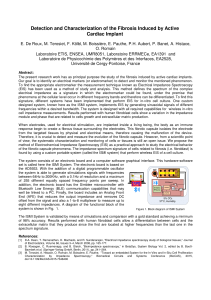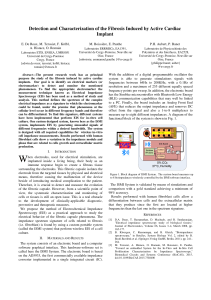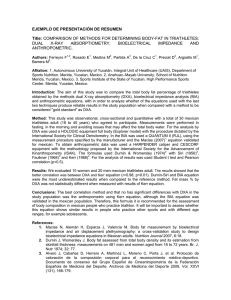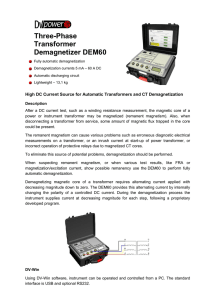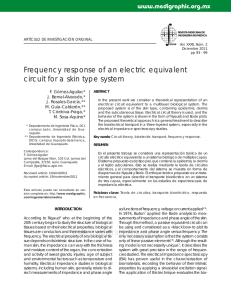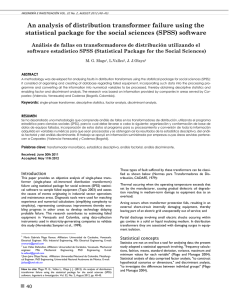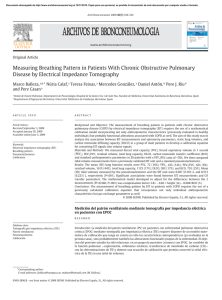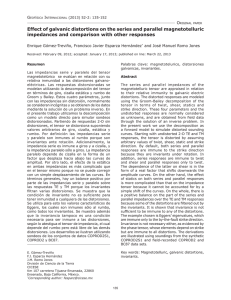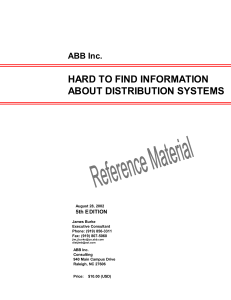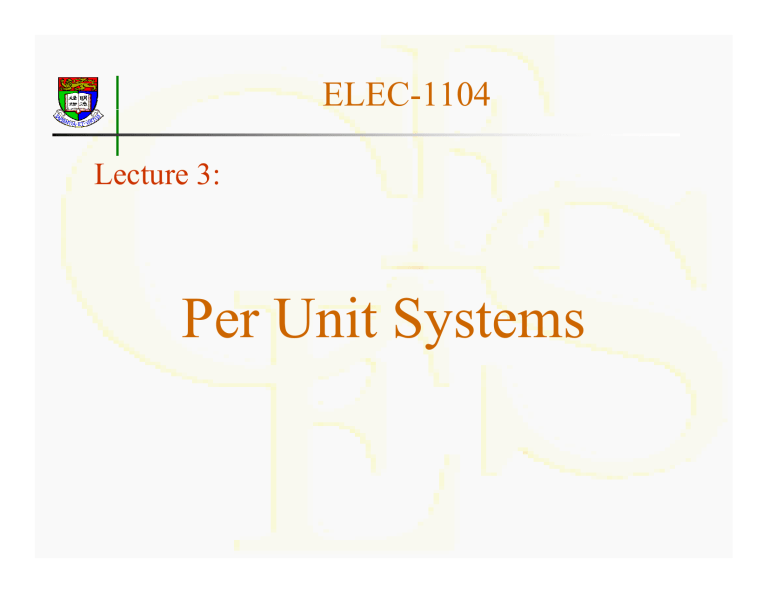
ELEC-1104 Lecture 3: Per Unit Systems Basic Units The 4 basic electrical quantities are: Voltage V (volt) Current I (amp) Impedance Z (ohm) P Power S (VA) For single-phase circuits, V(volt) = Z(ohm) × I(amp); S (VA) = V(volt) × I(amp) I(amp)* Per unit notation In per unit notation, the physical quantity is expressed as a fraction of the reference value, va ue, i.e. .e. per unit value = actual value/base value in the same unit. unit e.g. V(in per unit) = V(in kV)/V base (in kV) where the base value is a reference value for magnitude. Base Quantities Q In per unit notation we would like to keep the basic relations: Vpu = Zpu Ipu; Spu = Vpu Ipu* Hence the base quantities should be chosen such that Base voltage (VB) = b base impedance i d (ZB) × base b currentt (IB) Base power (SB) = b base voltage l (VB) × base b current(I (IB) Base Quantities Q Thus only two of the base quantities can be arbitrarily chosen, the other two will follow d ect y. directly. It is common practice to specify b base pwer (SB) andd base b voltage lt (VB) Then it follows base current IB = SB/VB base impedance p ZB = VB/IB =VB2/SB Percentage g Values An equivalent way to express the per unit value is the percentage value where Percentage value = per unit value × 100% However, percentage values are not so convenient to use since Vpercent ≠ Zpercent × Ipercent Example p 1 Given Find Fi d V = 100∠30o Z = 3 + j4 = 5∠53.1o Ω currentt active, reactive, & apparent power power factor I Z V Solution 1 Take ((for example) p ) Base power Base voltage SB = 1 kVA VB = 100 V Base current Base impedance IB = SB/VB = 10 A ZB = VB/IB = 10 Ω Then Given V = 100 ∠30o V = 1.0 ∠30o p.u. Z = 5∠53.1 5∠53 1o Ω = 0.5∠53.1 0 5∠53 1o p.u. Solution 1 (cont) ( ) Current » I = V/Z = 2.0 ∠-23.1o p.u = 2.0×10∠ 2 0×10∠-23 23.11o A = 20∠ 20∠-23 23.1 1o A Complex power » S = VI* = 2.0 2 0 ∠53.1 ∠53 1o p.u p u = 1.2 1 2 + j1.6 j1 6 p.u. pu » Apparent power S = 2.0×1 = 2 kVA » Active Acti e power po er P = 11.2×1 2×1 = 1.2 1 2 kW » Reactive power Q = 1.6×1 = 1.6 kVAr » Power P ffactor t p.f. f = P/S = 11.2/2.0 2/2 0 = 0.6 06 Base Value for 3-phase p systems y For 3-phase 3 phase systems it is common practice to describe system operation with: total 3-phase power S = S3-Ԅ line voltage V = Vline line current I = Iline equivalent impedance/phase Z = Zph p with (in magnitude) V = √3ZI; S = √3VI. √3VI Base Value for 3-phase p systems y Hence if base values are chosen for: total 3-phase power SB li voltage line lt VB Then base line current √3V VB IB = SB/ √ base impedance ZB = VB/ √3IB = VB2/SB Example p 2 Supply: 400 V, 50 Hz, 33-phase phase Load: 3 identical coils with Z = 20+j15 Ω in star connection. connection Find: line current power supplied power factor. Solution 2 Take ((for example) p ) Base power (total 3-phase) Base voltage (line-to-line) SB = 10 kVA VB = 400 V Then Base current Base impedance Given IB = SB/√3VB = 14.43 14 43 A ZB = VB2/SB = 16 Ω V = 400 V = 1.0 p.u. Z = 25∠36.9 25∠36 9o Ω = 1.5625∠36.9 1 5625∠36 9o p.u. Solution 2 (cont) ( ) Current I = V/Z / = 1.0 1 0 /1.5625 /1 62 p.u. = 0.64 0 64 p.u. = 0.64×14.43 A = 9.235 A Apparent power S = VI = 1.0×0.64 = 0.64 p.u. = 6.4 kVA Power factor pp.f. = cos 36.9o = 0.8 Active power P = VI × ppf = 0.64 × 0.8 pp.u = 0.512 pp.u. = 0.512 × 10 = 5.12 kW Choice of Base values For a connected circuit,, it is obvious that the same bases should be used for the whole network such that the normal circuit theorems would also apply to per unit values, e.g. Kirchhoff laws At a given node, ∑i(Ipu)i = 0 Around a mesh ∑i(ΔVpu)i = 0 Impedance in series Zpu = (Zpu)1+ (Zpu)2 Admittance in parallel Ypu = (Ypu)1+ (Ypu)2 Base values for a transformer In a transformer, two circuits are not directly connected but magnetically coupled. The voltages vo tages of o the t e windings w d gs are a e in the t e ratio at o of o turns and currents in inverse ratio. For the coupled circuit circuit, we should then choose » The same base power » Base voltages in the ratio of turns. turns This will ensure Spu, Vpu, Ipu, to remain unchanged when passing through an ideal transformer Base values for a transformer Let n1,n2 be the number of turns in primary and secondary winding. winding Z1, Z2 be the primary and secondary winding impedance. Then total impedance referred to primary ZT11 = Z1 + (n1/n2)2Z2 and total impedance referred to secondary ZT2 = Z2 + (n2/n1)2Z1 = (n2/n1)2ZT1 Base values for a transformer If base values were chosen for the transformer: SB1 = SB2; VB1 = (n1/n2)VB2 Then Th IB1 = (n2/n1)IB2 ; ZB1 = (n1/n2)2ZB2 Thus per unit impedance of transformer Zpu = ZT1/ZB1 = ZT2/ZB2 is the same whether we use the total impedance referred to primary or secondary. secondary Equivalent q circuit for transformer In the per unit representation, the equivalent circuit of a transformer is a simple winding peda ce Zpu (w (with t excitation e c tat o branch ba c impedance ignored) (I1)pu (V1)pu (I2)pu (Z)pu (V2)pu Base Conversion If the per unit values are given based on SB1 and VB1 which are different from the chosen base SB2 aandd VB2 for o analysis, a a ys s, tthee given g ve per pe unit values must be modified before they ccan be used. Thus us (Vpu)2 = V/VB2 = (Vpu)1×VB1/VB2 (Spu)2 = S/SB2 = (Spu)1×SB1/SB2 Base Conversion Similarly (Ipu)2 = I/IB2 = (Ipu)1×IB1/IB2 = (Ipu)1×VB2/VB1 ×SB1/SB2 (Zpu)2 = Z/ZB2 = (Zpu)1×ZB1/ZB2 = (Zpu)1×(VB1/VB2)2 ×SB2/SB1 Example p Given a 50 MVA, 3.3 kV generator has a synchronous impedance of 10%. Find the per unit impedance on a base of 100 MVA and 5 kV. Zp.u. = 0.1 x (3.3/5.0)2 x (100/50) = 0.087 p.u. Example p Choose base power p Sbase = 20 MVA Base ase vo voltages tages Vbase1 = 11 kV Vbase2 = 33 kV Then XG1 = 0.15pu XG2 = 0.20x20/40=0.10pu XT = 0.12x20/60=0.04pu 20MVA X=15% 40MVA X=20% G1 G2 11 kV T 33 kV 11/33kV 60MVA X=12% Advantages g of Per Unit System y Normally we are dealing with numerics near unity rather than over a wide range. Provides a more meaningful comparison of parameters of machines with different ratings. ratings As the per unit values of parameters of a machine hi off a given i ddesign i normally ll falls f ll within a certain range, a typical value can be used sed if such s ch parameters are not provided. pro ided
